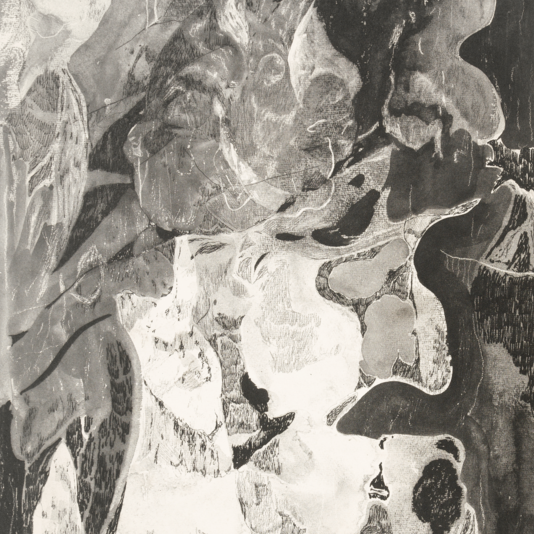
Allison Benis White Selected Poetry
From the long poem ‘Please Bury Me in This,’ paired with paintings in Joshua Hagler’s monograph ‘This is the Picture.’

Colette LaBouff & Joshua Hagler in Conversation
Conversation between Colette LaBouff and Joshua Hagler originally published in Hagler’s ‘This is the Picture’ monograph.

Nihil (Part I)
New Mexico is the fourth largest state in terms of land mass, one of the least populated, and also one of the poorest in the country. Small isolated communities, often in final stages of neglect and ruin, contrast against the immense geological displays of the natural landscape. One sees far into its coruscating distance during the day, and up into the perforated cosmos at night. What began as a kind of exile from the cities to which I once sought and failed to belong, has become a home, and not just a home, but a kind of repatriation of the soul.

Nihil (Part II)
Why is it, I wonder, that I find myself making work about things and places few in my former enculturated city centers would take interest in while using materials many would see as garbage? I seem to identify with the forgotten and overlooked, which suggests a longterm psychological consequence of my work long overlooked in the course of those fifteen years. As for why the images in my paintings seem to dissolve further and further into abstract fields, and why sound now seems now to rival the image in terms of what compels me to make paintings, I can’t be entirely sure.

Nihil (Part III)
I don’t remember exactly when it happened, and I don’t know how, that the word “nihil” flashed in my mind. But it simply did, the five letters, not as a brainy question or concept, but as a “pure, clear word” as poet Stanley Kunitz would put it, unconnected to anything I was doing, reading, or thinking about consciously at the time. Yet day after day, I would see this word in my mind’s eye.

Truth, Trauma and Paintings’ Murmurs
It’s GMT in London when I speak to Joshua Hagler from his studio and home in Roswell New Mexico where it is ‘mountain time’. ‘Time moves faster at higher altitudes’ Hagler tells me as we connect over WhatsApp to arrange our phone interview. And time and its movement is indeed a fitting image to begin to think and write about Joshua Hagler’s work, for whom the metaphysical movement of time – that is its arcs, ellipses and vestiges – is a recurring preoccupation. And not just time in its abstract sense, but time lived and perceived through the body as imprints of memory and of experience.
But what might this mean in practice, for painting and for making images?



Joshua Hagler’s Exuberantly Sullen Paintings At Cris Worley Fine Arts Speak To Creation, Death
In The Dallas Morning News written by Matthew Bourbon

Drawing in the Dark
In the evenings leading up to the 2020 solstice, I made blind contour drawings of the landscape in New Mexico’s Hondo Valley and Lincoln National Forest as Saturn and Jupiter inched toward their eventual conjunction. I used only available light to view my sketch pad: the remaining light at dusk, the crescent moon, street lights, Christmas lights from faraway houses, and passing cars along the freeway….